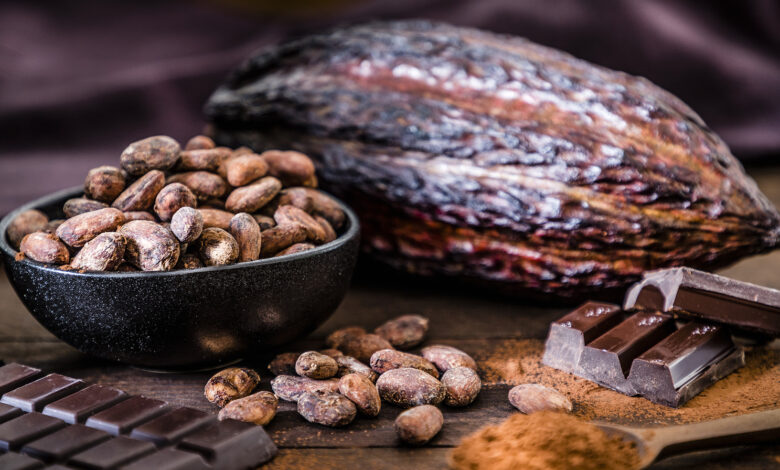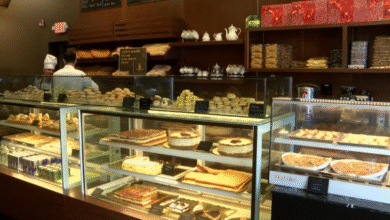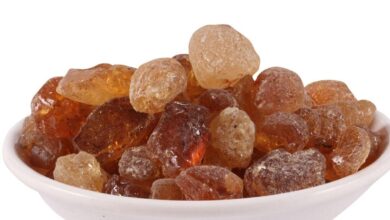Do Cocoa Beans Taste Like Chocolate? The Surprising Truth

If you’ve ever wondered do cocoa beans taste like chocolate, you might be surprised by the answer. While cocoa beans are the foundational ingredient in all chocolate products, biting into a raw bean delivers a vastly different experience than unwrapping a candy bar. The short answer is that cocoa beans share some flavor characteristics with chocolate—earthy, slightly fruity, and unmistakably chocolatey—but they lack the sweetness, smoothness, and complexity we associate with finished chocolate. Understanding this difference reveals the fascinating transformation that occurs during chocolate making and helps explain why processing matters so much in creating the flavors we love.
What Do Raw Cocoa Beans Actually Taste Like?
Do cocoa beans taste like chocolate? The initial experience of tasting a raw cocoa bean often surprises first-timers with its intense bitterness and astringency. Unlike the sweet, creamy chocolate we’re accustomed to, raw cocoa beans deliver a powerful, almost overwhelming flavor that hits your palate immediately. The bitterness comes from high concentrations of polyphenols and alkaloids, particularly theobromine, which haven’t been mellowed through roasting or balanced with sugar.
Beyond the initial bitterness, attentive tasters can detect complex undertones depending on the bean’s origin. You might notice fruity notes reminiscent of berries or citrus, earthy flavors similar to coffee or tobacco, nutty characteristics, or even floral hints. The texture is firm and crunchy, with a slightly waxy feel from the natural cocoa butter content. The beans leave a dry, puckering sensation in your mouth due to the tannins present in unprocessed cacao.
The flavor profile also includes a subtle chocolate essence—the fundamental taste that underlies all chocolate products—but it’s buried beneath layers of bitterness and astringency. This raw, unrefined taste represents the pure expression of the cocoa bean before transformation. Most people find the experience interesting but not particularly pleasant on its own, which explains why humans have spent centuries developing processes to refine these beans into the delicious chocolate we know today.
Why Cocoa Beans Don’t Taste Exactly Like Chocolate
The gap between raw cocoa beans and finished chocolate reveals the artistry and science of chocolate making.
The Role of Processing and Roasting
Fermentation is the first crucial step that begins transforming cocoa bean flavor. After harvesting, beans ferment for 5-7 days, during which enzymes break down the pulp surrounding the beans and trigger chemical reactions within the beans themselves. This process reduces excessive bitterness, develops precursor flavor compounds, and begins creating the chocolate taste we recognize. Without proper fermentation, cocoa beans taste harsh and unpleasant even after further processing.
Roasting represents the most dramatic flavor transformation. When cocoa beans are roasted at temperatures between 250-350°F (120-175°C), the Maillard reaction occurs—the same chemical process that browns meat and toasts bread. This reaction creates hundreds of new flavor compounds, including those responsible for the nutty, toasty, and deeply chocolatey notes in finished chocolate. Roasting also reduces astringency, mellows bitterness, and makes the beans easier to process. Different roasting profiles create different flavor outcomes, from light roasts that preserve fruity notes to dark roasts that develop intense, bold flavors.
The grinding and conching process further refines the flavor by reducing particle size, distributing cocoa butter evenly, and allowing volatile compounds (some unpleasant) to evaporate. Conching—a process of continuous mixing and aerating the chocolate—can last hours or even days, smoothing the texture and developing a more rounded flavor profile.
Missing Ingredients: Sugar, Milk, and More
Perhaps the most obvious reason cocoa beans don’t taste like chocolate is the absence of sugar. Commercial chocolate typically contains 30-70% sugar depending on the type, which fundamentally changes the flavor experience from bitter to sweet. Sugar doesn’t just add sweetness; it also balances the natural bitterness and creates a more complex flavor profile through interactions with other compounds.
Milk chocolate includes dairy products—milk powder, condensed milk, or cream—which add creaminess, reduce bitterness further, and create the mild, accessible flavor profile many people prefer. The milk proteins and lactose interact with the cocoa compounds to create entirely new flavors through caramelization during processing. Dark chocolate skips the milk but still includes significant sugar and often added cocoa butter to create smoothness and improve mouthfeel.
Additional ingredients like vanilla, lecithin (for texture), and sometimes salt enhance and round out the flavor. Vanilla complements chocolate’s natural notes, while salt intensifies sweetness and chocolate flavor through contrast. Quality chocolate makers carefully balance all these elements to create the specific taste profile they’re targeting, whether that’s a fruity single-origin dark chocolate or a creamy milk chocolate bar.
The Flavor Journey: From Bean to Bar
Understanding the transformation helps answer do cocoa beans taste like chocolate by showing how each step builds flavor.
| Stage | Flavor Characteristics | Key Changes |
| Fresh Pod | Sweet pulp, bland beans | Beans have minimal flavor development |
| Fermentation | Developing chocolate notes, reduced bitterness | Enzymes break down compounds, precursors form |
| Drying | Concentrated flavors, still bitter | Moisture reduction, flavor preservation |
| Roasting | Chocolate aroma emerges, nutty notes | Maillard reaction, bitterness reduction |
| Grinding | Intense chocolate, still unsweetened | Cocoa butter releases, particle refinement |
| Conching | Smooth, mellow chocolate | Volatile acids evaporate, flavor rounds out |
| Finished Chocolate | Balanced, sweet, complex | Sugar and ingredients create final profile |
This journey demonstrates why raw cocoa beans taste fundamentally different from the chocolate bar in your pantry. Each processing step either removes undesirable compounds or develops desirable ones, gradually transforming the bitter, astringent bean into something delicious. The fermentation lays the groundwork, roasting develops the chocolate character, and the addition of complementary ingredients creates the final balanced product.
The time invested in this process varies by producer, with artisan chocolate makers often taking more time at each stage to develop nuanced flavors. Mass-produced chocolate may rush through these steps, resulting in less complex flavor profiles. This explains why premium chocolate from quality cocoa beans tastes markedly different from budget options—the care taken at each stage of transformation directly impacts the final product.
Factors That Affect Cocoa Bean Taste
Not all cocoa beans taste identical, even in their raw state, which adds complexity to the question do cocoa beans taste like chocolate.
Origin and Variety
The three main cocoa bean varieties produce distinctly different flavor profiles. Criollo beans, considered the finest and rarest, offer delicate, complex flavors with prominent fruity and nutty notes and lower bitterness. These beans are prized by premium chocolate makers but represent only about 5% of global production. Forastero beans, the most common variety accounting for 80-90% of production, deliver robust, straightforward chocolate flavor with higher bitterness and earthy notes—reliable but less nuanced. Trinitario beans, a hybrid of Criollo and Forastero, balance quality and productivity with varied flavor profiles that can lean fruity, spicy, or earthy depending on the specific genetics.
Geographic origin significantly impacts cocoa bean taste through terroir—the combination of soil, climate, rainfall, and local microorganisms. Madagascar beans often display bright, fruity, almost tangy notes with red berry characteristics. Ecuadorian beans tend toward floral and jasmine notes with balanced bitterness. Venezuelan Criollo beans showcase nutty, caramel-like qualities with minimal bitterness. West African beans (Ghana, Ivory Coast) offer classic, straightforward chocolate flavor with robust intensity. These regional differences persist even after processing, which is why single-origin chocolate has become increasingly popular among chocolate enthusiasts.
Processing Methods Impact Raw Bean Taste
Even before roasting, fermentation techniques dramatically affect how cocoa beans taste. Longer fermentation (6-7 days) typically produces more developed flavor precursors and reduced astringency, while shorter fermentation leaves more raw, vegetal flavors. The fermentation method—heap, box, or tray—and the care taken during this process separate quality producers from those cutting corners.
When beans are eventually roasted, the temperature and duration determine the final character. Light roasting (250-280°F) preserves the bean’s inherent fruitiness and origin characteristics but retains more acidity and bitterness. Medium roasting (280-320°F) balances development with origin preservation, creating the classic chocolate flavor most people expect. Dark roasting (320-350°F) produces intense, bold, sometimes smoky flavors but can overshadow the bean’s unique characteristics. Dutch processing (alkalization) further reduces acidity and darkens color, creating a milder, earthier flavor profile preferred in some applications like cocoa powder for baking.
How to Taste Cocoa Beans Like a Professional
If you’re curious about experiencing cocoa beans and answering do cocoa beans taste like chocolate for yourself, proper tasting technique enhances the experience.
Start by selecting high-quality, properly fermented and dried cocoa beans from reputable sources like Zucchero Canada, where sourcing standards ensure you’re tasting beans at their best. Look for beans with a deep brown color, minimal defects, and a pleasant chocolate aroma even before breaking them open. Avoid beans that smell moldy, smoky (unless intentionally smoked), or have no aroma at all.
To taste, first smell the whole bean, noting any aromas. Then break the bean in half to release fresh aromatics—quality beans will smell distinctly chocolatey even raw. Take a small piece and let it sit on your tongue for a moment before chewing slowly. Pay attention to the initial bitterness, then any secondary flavors that emerge: fruity notes (berry, citrus, tropical fruit), nutty characteristics (almond, hazelnut), earthy tones (forest floor, tobacco), floral hints (jasmine, rose), or spicy elements (cinnamon, pepper). Notice how the flavor evolves and what sensations linger after swallowing.
Professional tasters often keep water and plain crackers handy to cleanse the palate between samples when comparing different origins or varieties. They also note the texture—should be firm but not rock-hard—and the way the beans break, which indicates proper fermentation and drying. The cacao butter content creates a slight melt-in-your-mouth quality even in raw beans. If you’re tasting multiple samples, move from lighter, more delicate beans to more intense, robust ones to avoid overwhelming your palate early.
Pairing raw cocoa beans with other foods can make them more palatable while highlighting their characteristics. Try them with dried fruit to complement fruity notes, nuts to enhance nutty qualities, aged cheese for an interesting contrast, or a small amount of honey to balance bitterness without overwhelming the bean’s natural flavor.
Can You Eat Raw Cocoa Beans?
Yes, raw cocoa beans are safe to eat and many people consume them for their nutritional benefits, though moderation is key.
Properly fermented and dried cocoa beans don’t pose food safety risks for most people. The fermentation process naturally reduces potential pathogens, and the beans’ low moisture content after drying prevents bacterial growth. However, raw cocoa beans contain higher levels of certain compounds that can cause side effects in large quantities. Theobromine, the natural stimulant in cacao, can cause jitteriness, rapid heartbeat, or digestive discomfort if you eat too many beans. The high fiber content can also cause digestive upset when consumed in excess.
From a nutritional standpoint, raw cocoa beans pack impressive benefits—they’re rich in antioxidants (flavonoids), magnesium, iron, and mood-enhancing compounds. The crunchy texture makes them satisfying as a snack, though the bitter taste takes getting used to. Most nutrition experts recommend starting with just a few beans (5-10) per day and increasing gradually if desired. Some people find that cocoa nibs—crushed pieces of roasted beans—offer a more palatable option with many of the same benefits and a mellower, less bitter taste.
The best ways to consume cocoa beans include eating them plain as a mindful snack to fully appreciate the flavor, adding crushed beans or nibs to yogurt, oatmeal, or smoothie bowls for nutritional boost and crunch, or incorporating them into homemade trail mix with nuts and dried fruit. You can also grind them into powder using a high-powered blender or coffee grinder, though this requires patience and produces a more intense flavor than commercial cocoa powder. Store whole beans in an airtight container in a cool, dark place where they’ll keep for months, maintaining their flavor and nutritional properties.
Using Cocoa Beans in Your Kitchen
Beyond eating them whole, cocoa beans offer creative culinary possibilities that let you answer do cocoa beans taste like chocolate through experimentation.
Making your own chocolate from cocoa beans is an ambitious but rewarding project. After roasting beans to your preferred level (typically 15-25 minutes at 300°F), remove the papery shells (winnowing), then grind the nibs in a high-powered food processor or specialized grinder. The heat from grinding melts the cocoa butter, creating chocolate liquor—the basis of all chocolate. Add sugar and continue processing for at least 30 minutes to create rudimentary chocolate, or invest hours in proper conching for smoother results. This hands-on process demonstrates exactly how processing transforms bitter cocoa beans into chocolate.
For simpler applications, add cocoa nibs (pieces of roasted cocoa beans) to baked goods for intense chocolate flavor and pleasant crunch—they work beautifully in cookies, brownies, and muffins. Sprinkle them on desserts, incorporating them into ice cream or frozen yogurt, or blending them into smoothies for nutritional benefits and chocolate flavor without added sugar. You can also infuse cream or milk with crushed cocoa beans to create unique chocolate beverages or use them as a base for chocolate sauces and ganache.
For savory applications, crushed cocoa beans add depth to spice rubs for grilled meats, especially when combined with chili peppers and cumin. Mexican mole sauce traditionally includes ground cacao for earthiness and complexity. Some adventurous cooks even add small amounts to salad dressings or use them as a crust for roasted vegetables.
When working with cocoa beans, remember that they lack sugar, so recipes will need adjustment if substituting them for chocolate chips or chunks. Store beans properly in airtight containers away from heat, moisture, and strong odors—they’ll absorb surrounding flavors and aromas. Premium cocoa beans from quality sources provide the best foundation for all these culinary experiments, ensuring your efforts yield delicious results.
Conclusion
Do cocoa beans taste like chocolate? They share the fundamental chocolate essence but deliver a much more intense, bitter experience without the sweetness and smoothness of finished chocolate. Raw cocoa beans taste earthy, fruity, and unmistakably cacao-forward, but the bitterness and astringency surprise those expecting candy bar flavor. The transformation from bean to bar involves careful fermentation, precise roasting, and the addition of sugar and other ingredients that create the chocolate we recognize and love. Appreciating this difference deepens your understanding of chocolate craftsmanship and the remarkable journey each cocoa bean takes before becoming your favorite treat. Ready to explore premium cocoa beans and experience the taste for yourself? Visit Zucchero Canada for high-quality, sustainably sourced beans that showcase the authentic flavor of fine cacao and provide the perfect foundation for your chocolate-making adventures.
References
Afoakwa, E. O., Paterson, A., Fowler, M., & Ryan, A. (2008). Flavor formation and character in cocoa and chocolate: A critical review. Critical Reviews in Food Science and Nutrition, 48(9), 840-857. https://doi.org/10.1080/10408390701719272
Beckett, S. T. (2008). The Science of Chocolate (2nd ed.). Royal Society of Chemistry.
Kongor, J. E., Hinneh, M., de Walle, D. V., Afoakwa, E. O., Boeckx, P., & Dewettinck, K. (2016). Factors influencing quality variation in cocoa (Theobroma cacao) bean flavour profile—A review. Food Research International, 82, 44-52. https://doi.org/10.1016/j.foodres.2016.01.012
Saltini, R., Akkerman, R., & Frosch, S. (2013). Optimizing chocolate production through traceability: A review of the influence of farming practices on cocoa bean quality. Food Control, 29(1), 167-187. https://doi.org/10.1016/j.foodcont.2012.05.054
Wollgast, J., & Anklam, E. (2000). Review on polyphenols in Theobroma cacao: Changes in composition during the manufacture of chocolate and methodology for identification and quantification. Food Research International, 33(6), 423-447. https://doi.org/10.1016/S0963-9969(00)00068-5




